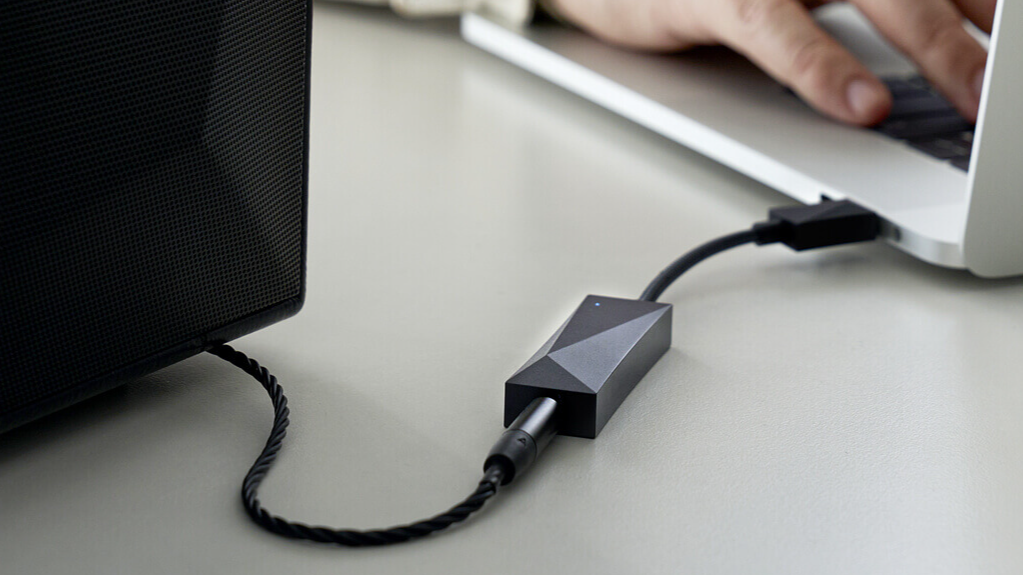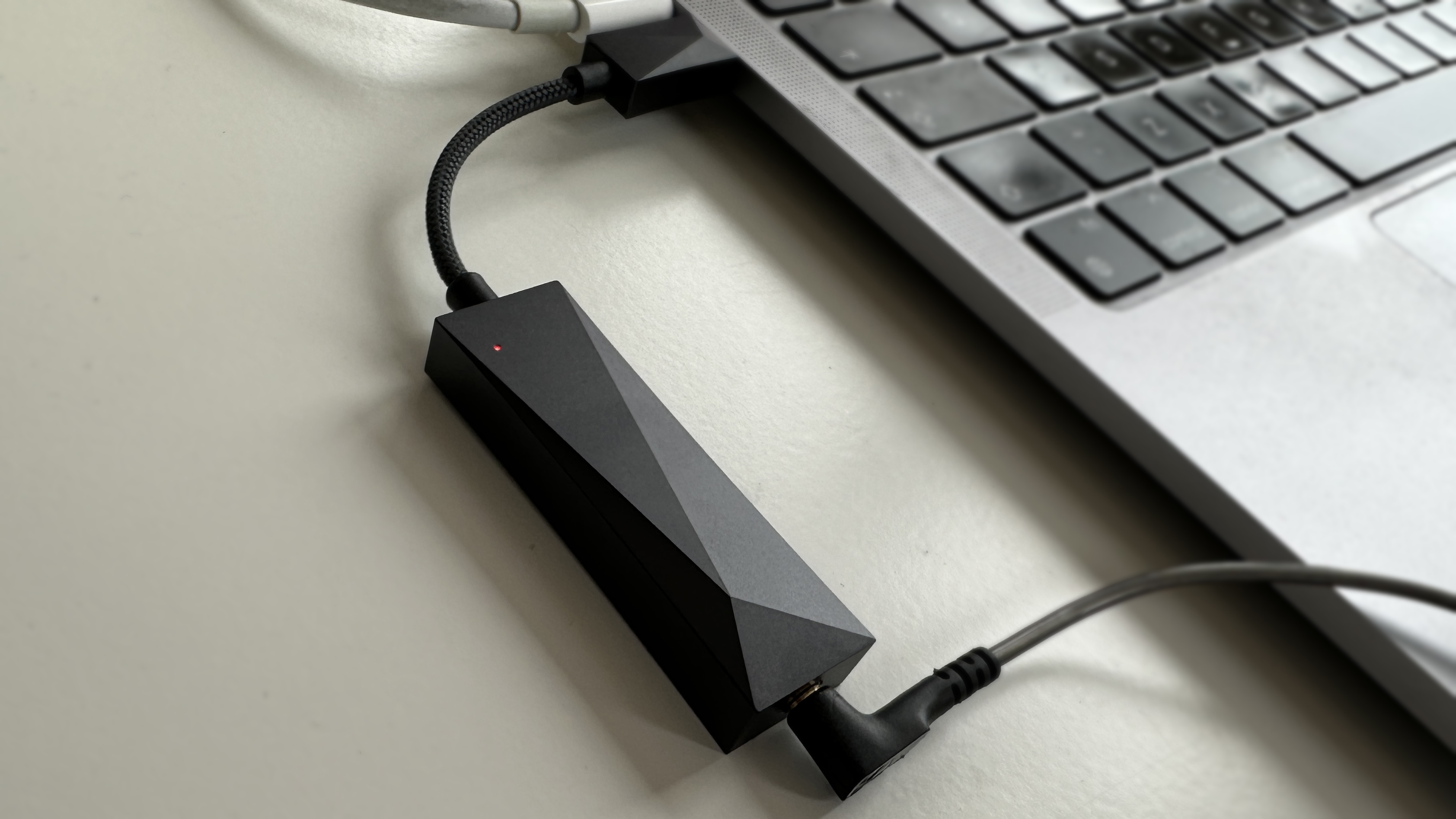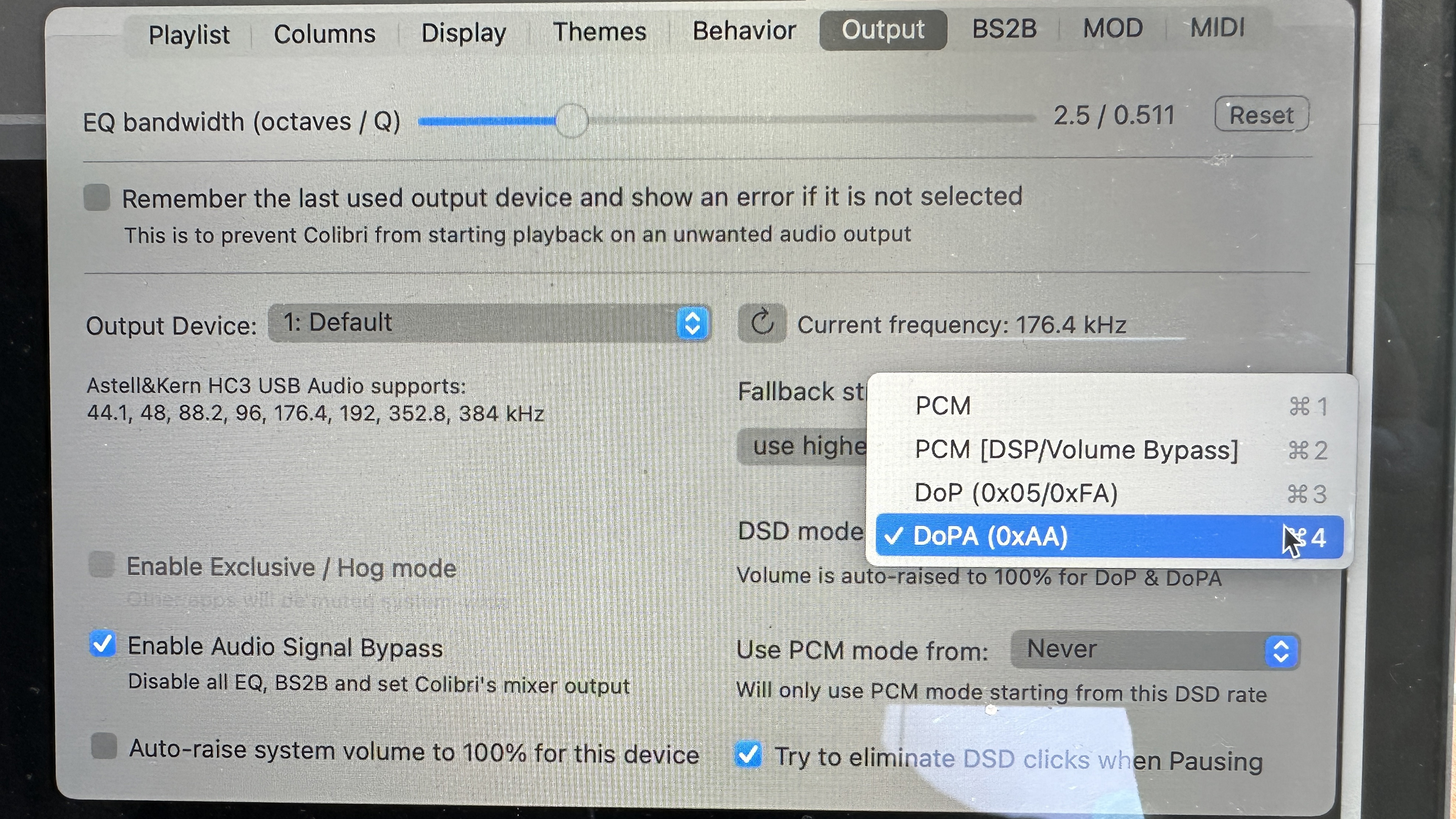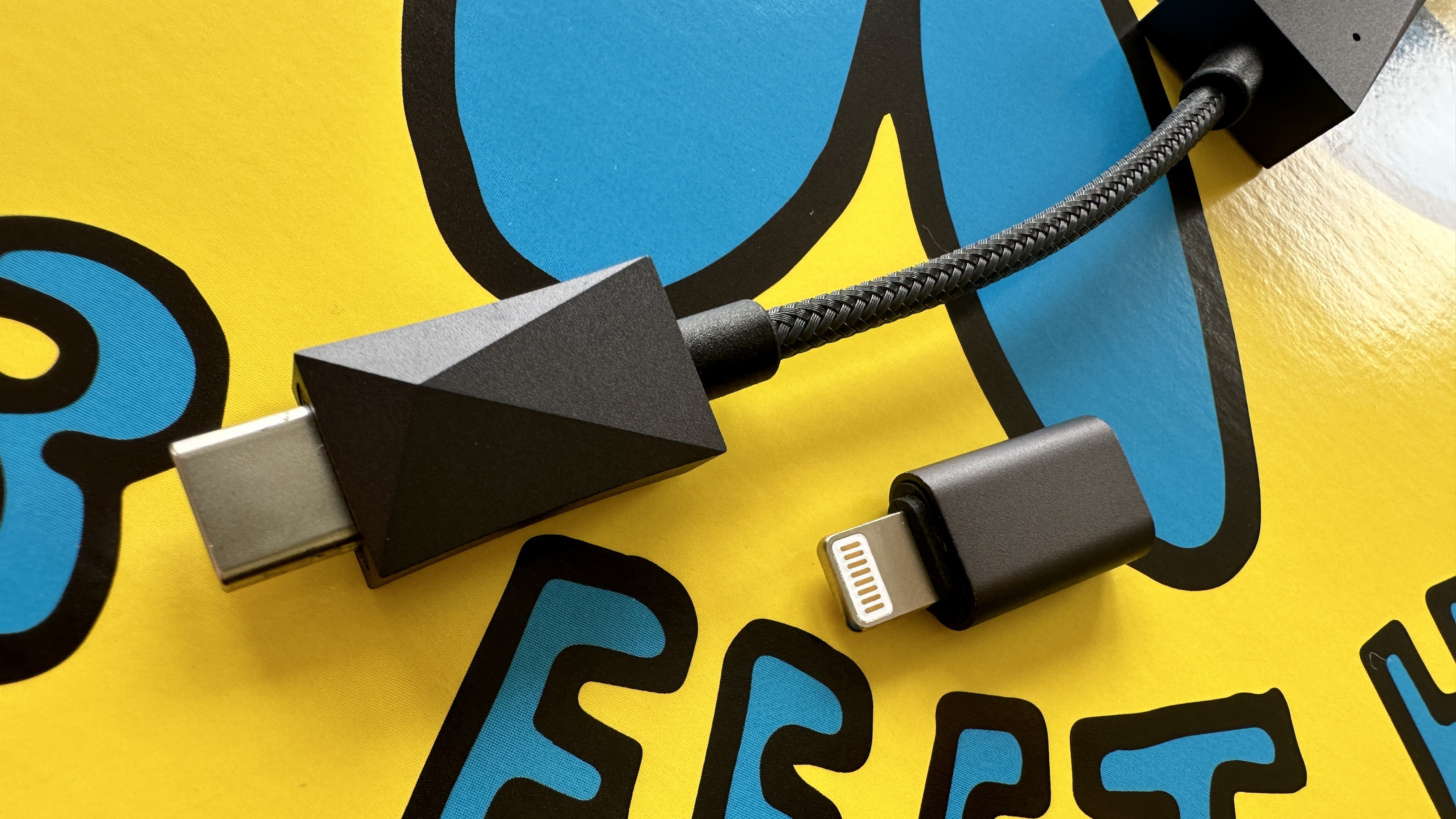Astell & Kern AK HC3 review: DACs on, DACs off
Astell & Kern's USB headphone amplifier/DAC, the AK HC3, delivers audio that's a big step up from your unassisted laptop or phone


In pure sound-quality terms, the Astell & Kern AK HC3 is a big step up from your unassisted laptop or smartphone. It looks and feels like a premium device, too, and its captive USB-C cable makes solid ergonomic sense. Android users will need to check if it’s prepared to get involved with their devices, though…
-
+
A big upgrade on smartphone or laptop sound
-
+
High-quality materials and build
-
+
Good digital audio file compatibility
-
-
Not an across-the-board fan of Android devices
-
-
Thinks ‘red’ and ‘magenta’ are the same colour
-
-
No balanced output
Why you can trust T3

It’s more common to find Astell & Kern serving up digital audio players (DAP) of lesser or greater expense, it’s true. But the company has found its space in its heart for those of us who don’t have an arm and a leg (or just one limb, even) to spend on a high-end DAP, as the AK HC3 proves.
The AK HC3 is another acronym entirely: this is a small, portable headphone amplifier/digital-to-analogue converter combination (DAC in shorthand), designed to take those duties away from your smartphone or laptop (which, let’s face it, has bigger fish to fry) and do the job properly. So, is it one of the best DACs money can buy?
Astell & Kern AK HC3: Price & Availability

The Astell & Kern AK HC3 headphone amplifier/DAC is on sale now, and in the United Kingdom it’s yours for £199 or thereabouts. In the United States it sells for around $229, while in Australia it goes for AU$299 or something quite like it.
USB DAC/headphone amp devices designed to improve the sound of your smartphone or laptop aren’t especially thin on the ground - and some very well-regarded products from some very well-regarded brands are yours for less than Astell & Kern wants for the AK HC3. In other words, this had better be something special if it’s going to justify the asking price…
Astell & Kern AK HC3 review: Features & What's New?

This is a very focused product, and it follows that its feature set is pretty focused too. There’s nothing superfluous about the AK HC3.
Digital-to-analogue conversion and headphone amplification is taken care of by a pair of ESS Sabre ES9219MQ chipsets. They are capable up to 32bit/384kHz and DSD256, and can handle MQA files too.
There’s a little LED tell-tale on the main body of the AK HC3 that glows white (to indicate ‘standby’), red (when receiving a PCM file), blue (for DSD) or magenta (for MQA). There’s not a huge amount of difference between ‘red’ and ‘magenta’ in Astell & Kern-land, mind you.
Get all the latest news, reviews, deals and buying guides on gorgeous tech, home and active products from the T3 experts
There’s (qualified) compatibility with Android, iOS, Windows and MacOS. Using the AK HC3 with an Android device means access to a control app - although that description is to overstate it somewhat. It’s basically a volume control (although admittedly of greater sensitivity than that of your average Android smartphone).
Astell & Kern AK HC3 review: Performance

First thing's first: the AK HC3 performs flawlessly with the MacBook Pro and iPhone 14 Pro we test it with, as well as an Asus Chromebook… but it is very hit-and-miss where our Nothing Phone (1) Android device is concerned. Astell & Kern suggests that due to “system requirements for some Android devices… compatibility issues may occur”. You can say that again. Best to try before you buy.
If you own a device the AK HC3 gets along with, though, it’s a worthwhile investment if not quite a no-brainer. Certainly it’s a great desktop companion - the sound it delivers with a pair of Sennheiser IE600 attached is of an entirely different order to that you get when plugging the headphones straight into a MacBook Pro’s headphone socket.
It’s an across-the-board improvement, too. The overall positivity of the presentation steps on, and there’s far greater willingness to attack and drive a recording. Bass is fuller, deeper and better controlled, while the top of the frequency range is more substantial, more detailed and has far more bite and shine about it.

The AK HC3 is more dynamic, more articulate and a sight more insightful than your unassisted source player, be it laptop or smartphone. The soundstage it creates is bigger in every direction, better defined and better organised. Tonality is more convincing. And in the midrange, which is the area where human hearing is at its most sensitive because it’s where (almost all) voices reside, the Astell & Kern is so much more eloquent, so much more alert to harmonics and dynamic variations and - to put it in the most unambiguous terms - so much more musical that it almost ceases to be a fair fight.
It’s true to say that bigger volumes can provoke the HC3 somewhat - its composure can desert it just a little, and what was previously a very even-handed presentation can become rather hard and in-you-face instead. There’s an obvious solution, though, which is not to play it at full whack.
If you can find an Android device the AK HC3 is happy to work with, it will support mic-assisted voice-calls and recording - iOS devices go without call support. And this DAC seems entirely unflummoxed by headphones with an in-line remote control, which is handy.
Astell & Kern AK HC3 review: Design & Usability

This is a necessarily small product - but that hasn’t prevented Astell & Kern attempting to bring just a hint of its established design vocabulary to bear. So both the main body of the AK HC3 (which is 59 x 18 x 11mm) and the USB-C plug housing (21 x 12 x 9mm) are of luxurious-feeling aluminium and feature that angular prism-y surface we’re all familiar with from the company’s range of digital audio players. The braided cable joining the two aluminium blocks together is 50mm long, and flexible (but not too flexible). All in, the AK HC3 weighs around 20g.
The two-block design allows signal processing to occur after the digital information has passed through the noise-shielded cable. Which should, theoretically, minimise noise in the resulting analogue information.
As far as usability is concerned, we can’t see “how to operate an Astell & Kern AK HC3” forming part of the Mensa membership test any time soon. Plug the USB-C into your source device, plug your headphones into the 3.5mm output at the other end and you’re in business. To be fair, there’s a USB-C/Lightning adapter in the packaging - but that's about the limit of its complexity.
Astell & Kern AK HC3 review: Verdict

It’s a pity the Astell & Kern AK HC3 doesn’t work with just any audio device (dagger eyes on some Android phones), because it’s a very capable DAC indeed. It's also a rather nice, tactile little thing in its own right, which looks very smart indeed.
Having said that, though, it’s not without worthwhile competition - and, what’s more, competition that doesn’t throw a hissy fit when asked to work with some Android players.
Also consider
We’re big fans of EarMen’s Sparrow USB DAC/headphone amp. It’s just a little more affordable than this Astell & Kern and, if anything, it’s even smaller - and while it lacks the AK HC3’s usefully captive USB-C cable, it has a balanced 2.5mm headphone output alongside a 3.5mm unbalanced alternative. Best of all, it delivers across-the-board sonic improvements, the emphasis of which are different to, rather than better than, the AK HC3. And to the best of our knowledge, it’s fine with your Android phone no matter the model.
Simon Lucas is a freelance technology journalist and consultant, with particular emphasis on the audio/video aspects of home entertainment. Before embracing the carefree life of the freelancer, he was editor of What Hi-Fi? magazine and website – since then, he's written for titles such as Wired, Metro, the Guardian and Stuff, among many others. Should he find himself with a spare moment, Simon likes nothing more than publishing and then quickly deleting tweets about the state of the nation (in general), the state of Aston Villa (in particular) and the state of his partner's cat.
